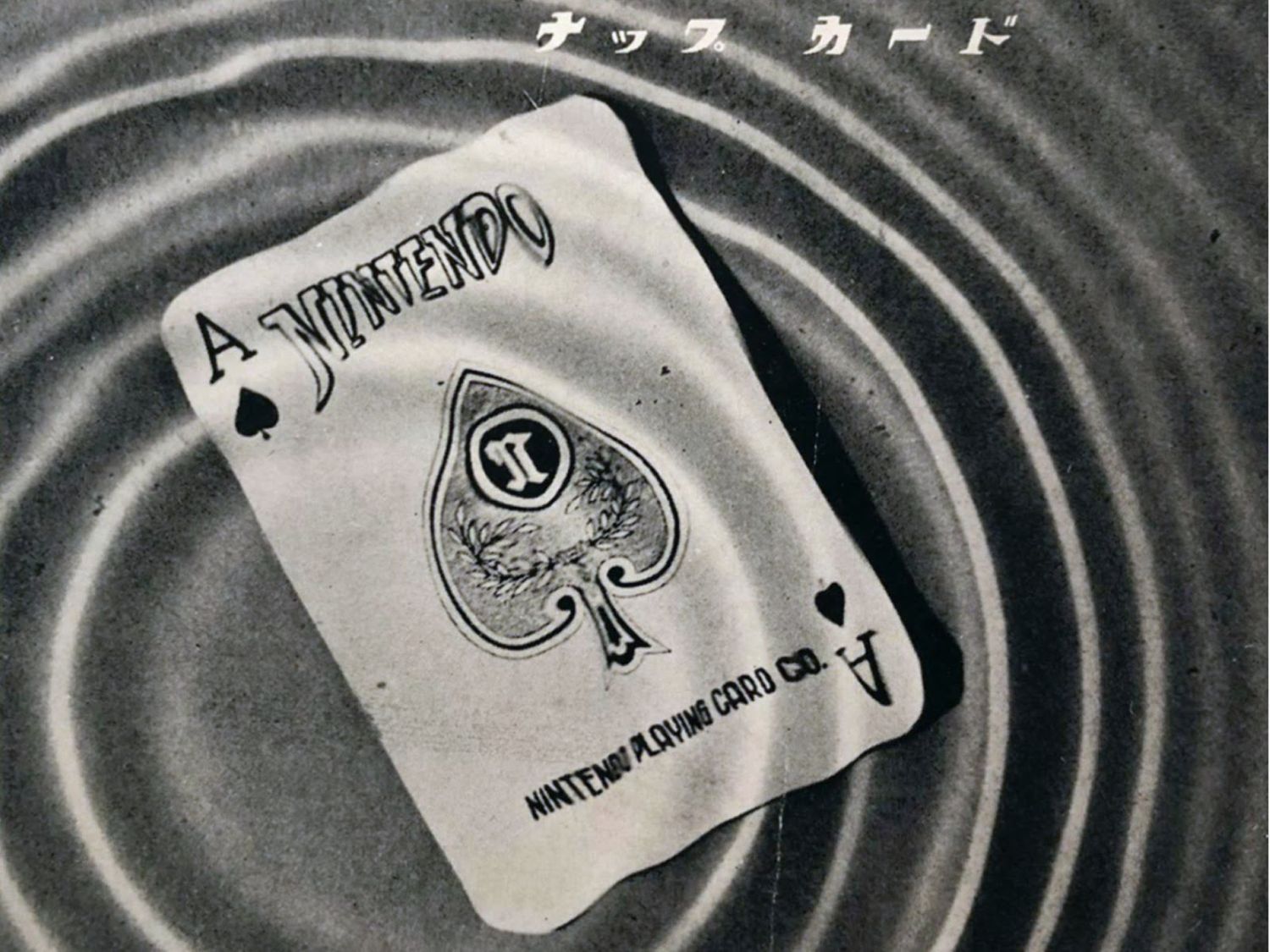TOMS used a 4-stage marketing funnel to collect leads and increase direct-response sales.
Here’s how they did it — and how you can too.
Direct response gets a bad rap.
People associate it with pushy salesmen and spammy ads. Limited time offers and fear-tactics. Cheap products and scammy order forms.
But, as I’ve said before, marketing is a tool. We can use it to build houses or tear them down.
You've probably seen TOMS casual canvas slip-on shoes around. The company recently ran a campaign that used direct response to build people up and sell more shoes while they’re at it.
What the heck is direct response?
First off, let’s talk about the difference between the two main types of advertising.
We have demand generation on one side. These are often creative, catchy, and memorable ads that put the brand front and center but do little to capture direct sales.
Most of the ads I review every week are in this category.
On the other hand, there’s direct response. These ads don’t really care about uplifting a brand — instead they appeal directly to customers’ buying motivations to either generate sales or capture lead data.
TOMS UK actually used a combination of these techniques in the marketing funnel below, but their ultimate goal was sales, which is why we’re categorizing this as a direct response campaign.
TOMS 4-stage direct response sales funnel
Okay, let’s jump in and take a look…
Stage 1: Great Content Marketing
TOMS began this campaign with good content that consumers would connect with. This is reminiscent of Yeti Cooler’s customer stories we talked about a few months ago.
This video on Facebook, for example, shares the tale of one man who set out to offer homeless individuals free haircuts (all while featuring their shoes):
To take it one step further, TOMS targeted multiple channels. Here’s what the same ad looks like on Instagram:
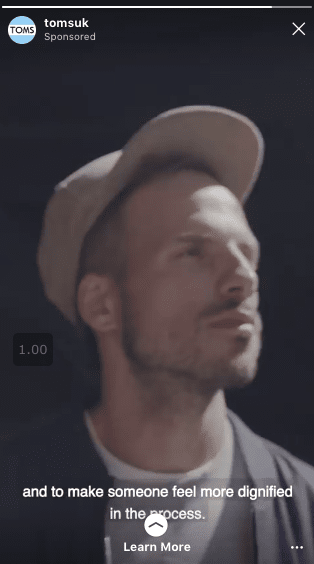
These stories are perfect because TOMS is all about charity. For every pair of shoes consumers buy, they give a pair away to those in need.
Stage 2: Remarketing & Giveaways
TOMS assumed that those who engaged with their video content were good Marketing Qualified Leads (MQLs).
So they served up another ad that connected these stories to their product:
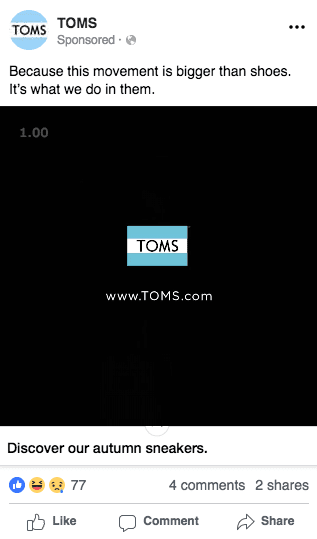
Here’s where we move away from demand generation and move into direct response.
TOMS also retargeted these buyers with a giveaway:
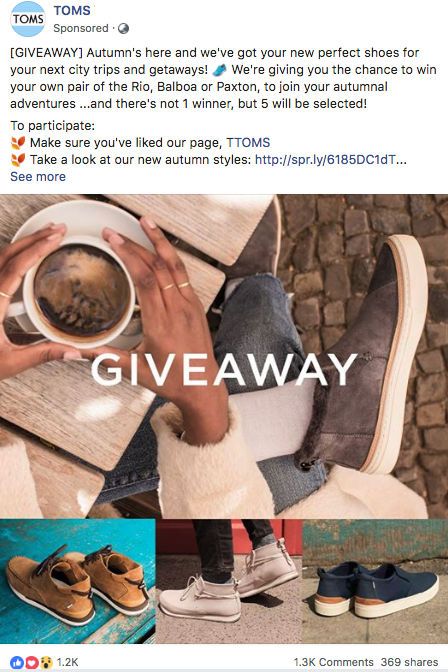
To enter, you had to go to a specific landing page and choose your favorite pair of TOMS (great way to collect customer intent data).
This campaign had 5600 total participants, a very good number of leads.
Stage 3: Shop Now Ads
TOMS made another assumption that these folks who entered the giveaway could be considered Sales Qualified Leads (SQLs) and served up another round of remarking ads:
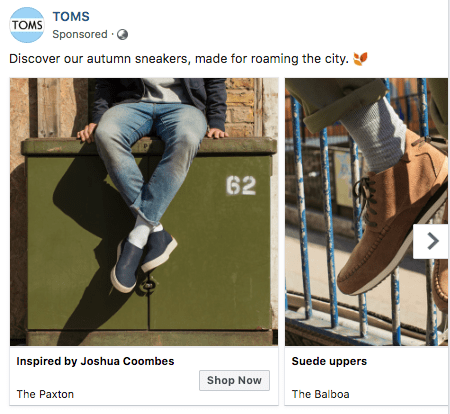
This time the call to action was “Shop Now,” which is much more to-the-point than the previous two.
Stage 4: Ongoing Marketing
This campaign got TOMS UK a 10% traffic boost on their website, a 19% video completion rate (lots of people actually watching!), and engaged over 35 million people.
The 5600 leads generated during the giveaway were also retargeted with more dynamic product ads (based on the shoes they expressed interest in) as well as additional direct-response emails and newsletters.
How you can build a similar funnel
Follow TOMS example and create these assets to build a similar funnel:
- A Giveaway Landing Page — Create a giveaway around your product or service (if you have multiple, have visitors pick one they like best and tag them with Facebook Pixel).
- Customer Story Ads — Feature a customer story related to each product or service you offer to generate demand.
- Remarketing Product Ads — Retarget engaged users with product ads that connect your stories to your products and giveaways.
- Email Campaign — Build out a few automated emails that highlight more customer stories and connect these to your products and services to improve response rates in the long-run.
Need a hand setting up a campaign like this? Send me a message and we’ll get some time on our calendars to discuss your direct response campaigns.
— Mike
P.S. Don't walk away empty-handed
Above the Fold is a newsletter about the power of marketing. Every week I send stories just like these straight to your inbox.


